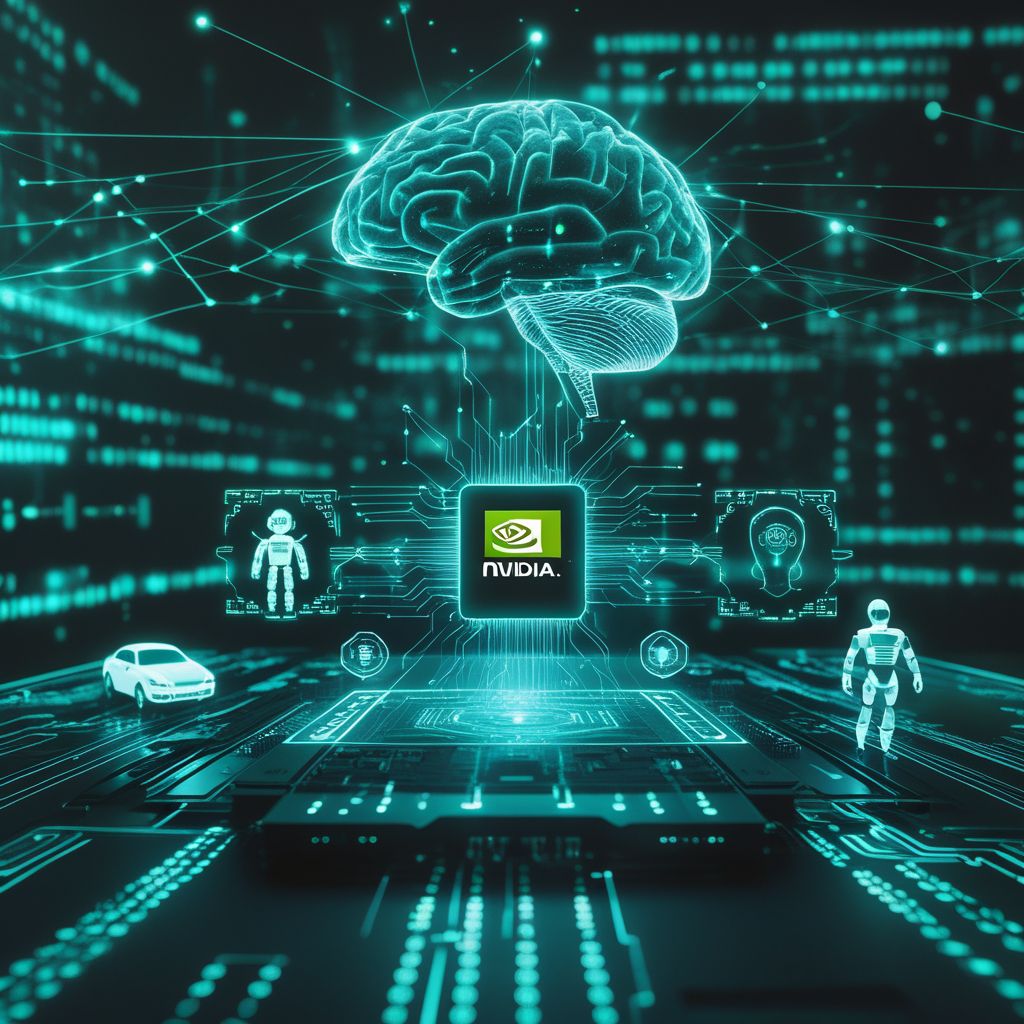The Hidden Playbook: How Did Nvidia Become an AI Superpower and Crush Its Rivals?

In the fiercely competitive world of technology, few stories are as dramatic and inspiring as that of NVIDIA. What began as a bold venture into the nascent 3D graphics market, teetering on the brink of bankruptcy, has transformed into a global powerhouse, now valued in the trillions. This is the tale of a company that not only survived existential threats but consistently innovated, anticipating shifts in technology that others couldn’t foresee, ultimately becoming an indispensable architect of the artificial intelligence revolution.
A Vision for the Digital Frontier: The Birth of NVIDIA
Founded in 1993 by Jensen Huang, Chris Malachowsky, and Curtis Priem, NVIDIA emerged during a pivotal moment: the dawn of the PC revolution. While computers of the era were largely utilitarian machines, primarily used for spreadsheets and word processing, a new form of digital entertainment was beginning to capture imaginations: video games.
These early games, though primitive by today’s standards, hinted at a future where immersive 3D worlds would become commonplace. The founders recognized a critical gap: personal computers lacked the specialized hardware to render these complex graphics smoothly. They envisioned a future where powerful graphics processing units (GPUs) would transform how we interact with digital content, particularly in gaming.

The First Hurdle: The NV1 and the DirectX Dilemma
NVIDIA’s journey was far from an overnight success. Their first product, the NV1 chip, launched in 1995, was an ambitious attempt to integrate graphics, sound, and game controls into a single chip. It even secured a partnership with Sega, a major player in the gaming console market. However, this promising start quickly turned into a near-fatal setback. The NV1’s architecture, which relied on quadratic surface textures for smoother graphics, clashed fundamentally with a new standard emerging from Microsoft: DirectX. Microsoft’s DirectX, designed to standardize game development on Windows PCs, mandated the use of triangle-based rendering ‒ a simpler, more efficient method for constructing 3D objects.
NVIDIA‘s decision to pursue a different path meant that game developers, eager to reach the broad PC market, largely ignored the NV1. The result was catastrophic: out of 250,000 units sold, 249,000 were returned, leaving NVIDIA with a mountain of useless inventory and just 30 days of cash remaining. The company was on the verge of collapse, a stark reminder of the unforgiving nature of the tech industry.
A Daring Bet: The Riva 128 and the Power of Simulation
Facing imminent bankruptcy, NVIDIA’s leadership made a desperate, yet brilliant, gamble. They decided to design a new chip, the Riva 128, in record time, but with a radical departure from traditional chip development: they would simulate the entire chip in software and test it virtually, bypassing physical testing to save time and money. This was an unprecedented move in an industry where physical testing was considered paramount due to the immense cost of manufacturing flawed chips.

The risk was enormous; a single error in the simulation could lead to millions of defective units and the definitive end of NVIDIA. After eight agonizing weeks, the Riva 128 chips arrived. In a moment of truth, the team powered them on, and to their astonishment, the chip worked perfectly. The Riva 128, a real-time interactive video and animation accelerator, was a resounding success, delivering smooth graphics and high frame rates that captivated developers and gamers alike. This miraculous turnaround not only saved NVIDIA but also validated a new, more agile approach to chip design.
Beyond Gaming: The Dawn of CUDA and Parallel Computing
The success of the Riva 128 marked a new chapter, but NVIDIA’s visionary leadership saw beyond just better gaming graphics. Jensen Huang recognized that the underlying power of their GPUs ‒ their ability to perform billions of calculations simultaneously ‒ had applications far beyond rendering virtual worlds. He envisioned a future where these chips could tackle complex problems in science, medicine, and, crucially, artificial intelligence.
This profound insight led to another audacious move: in 2006, NVIDIA invested heavily in developing CUDA (Compute Unified Device Architecture). CUDA was a revolutionary software platform that unlocked the full parallel processing capabilities of NVIDIA’s GPUs, allowing developers to program them for general-purpose computing tasks. It was, in essence, a new kind of brain, capable of simulating disease outbreaks, guiding self-driving cars, or calculating rocket trajectories to Mars.
However, CUDA was years ahead of its time. In 2006, the world of AI was still nascent, lacking the data, models, and belief in deep learning that would later fuel its explosion. For six years, CUDA remained a powerful tool without a widespread market, a rocket engine waiting for humanity to dream of space travel.

The AI Revolution: AlexNet and NVIDIA’s Indispensable Role
The true potential of CUDA and NVIDIA’s GPUs was finally unleashed in 2012 with the advent of AlexNet. A team of researchers at the University of Toronto, led by Geoffrey Hinton, used an NVIDIA GPU powered by CUDA to train a groundbreaking artificial intelligence model. AlexNet achieved unprecedented accuracy in image recognition, demonstrating that AI could learn effectively with sufficient data and the right processing power.
This wasn’t just a win in an academic competition; it was a paradigm shift. AlexNet proved three critical points: AI could learn from vast datasets, GPUs were the ideal hardware for training these models, and CUDA was the essential software layer making it all possible. Suddenly, the world caught up to Jensen Huang’s vision. Companies like Google, Facebook, Tesla, and OpenAI began leveraging NVIDIA GPUs and CUDA to power their advancements in search, facial recognition, autonomous driving, and large language models like ChatGPT.
NVIDIA’s chips became the backbone of the modern AI revolution, transforming the company from a gaming hardware provider into an indispensable architect of the future of computing. This incredible journey, from near-bankruptcy to a multi-trillion-dollar valuation, stands as a testament to relentless innovation, strategic foresight, and the courage to embrace failure as a stepping stone to unimaginable success.


